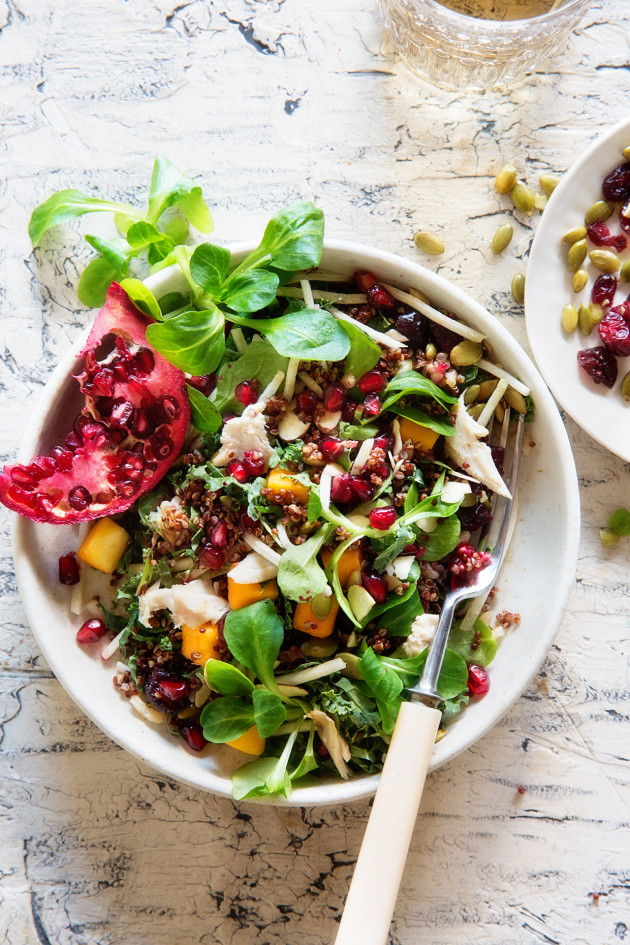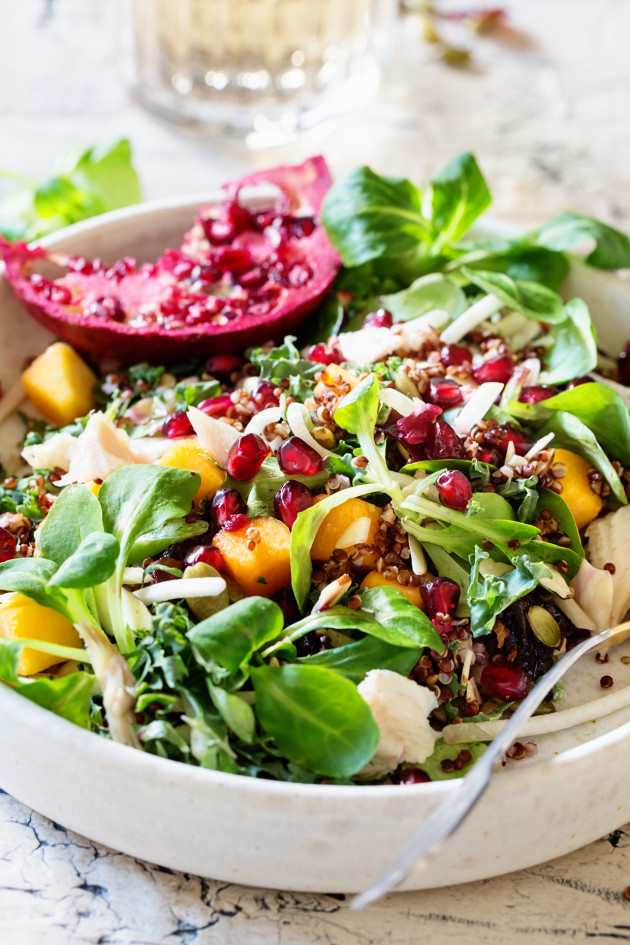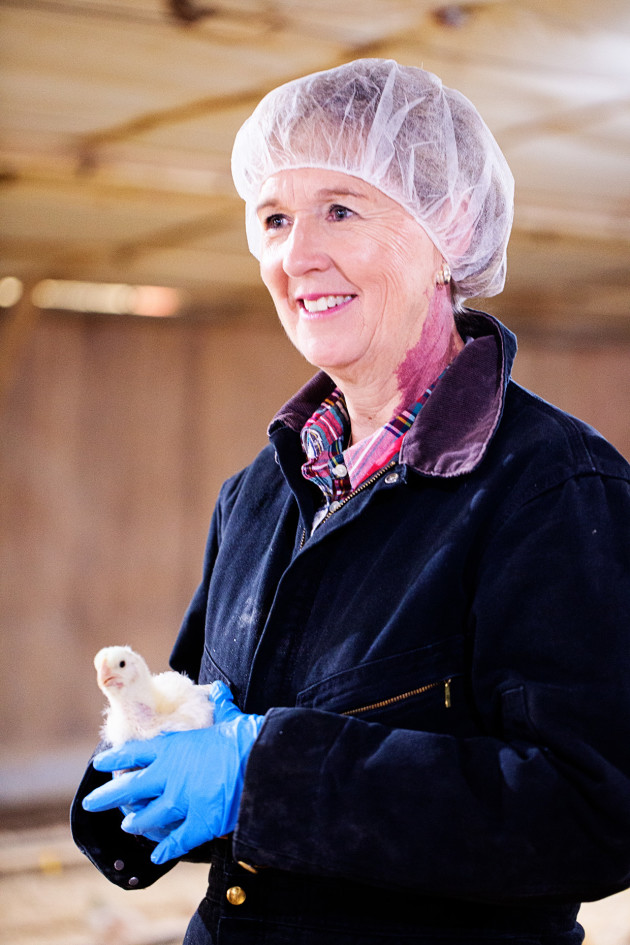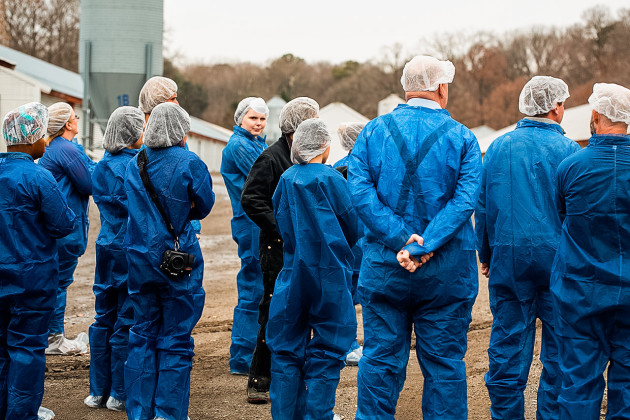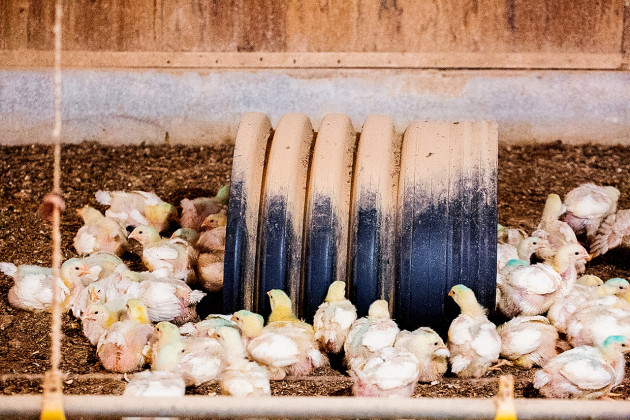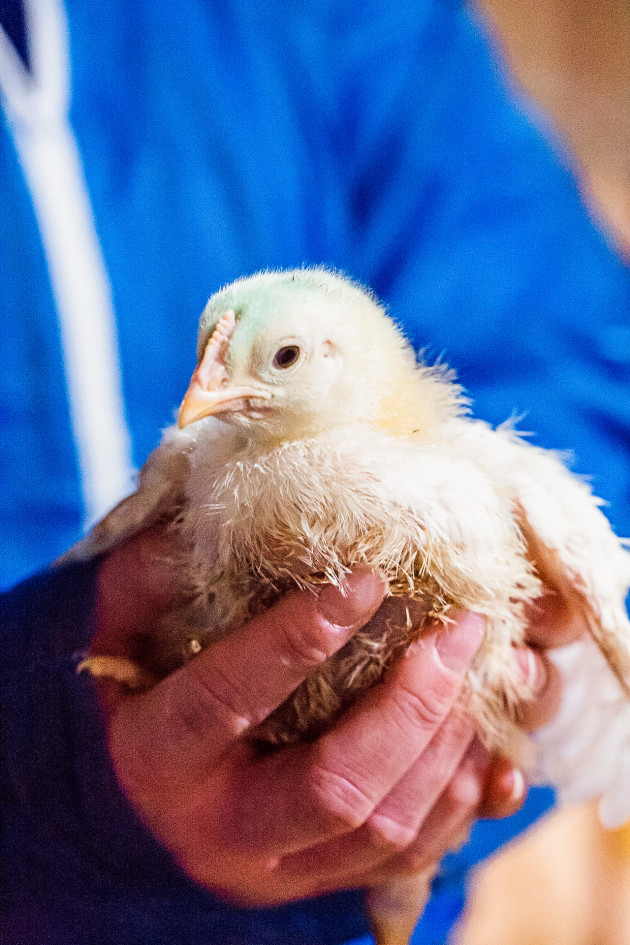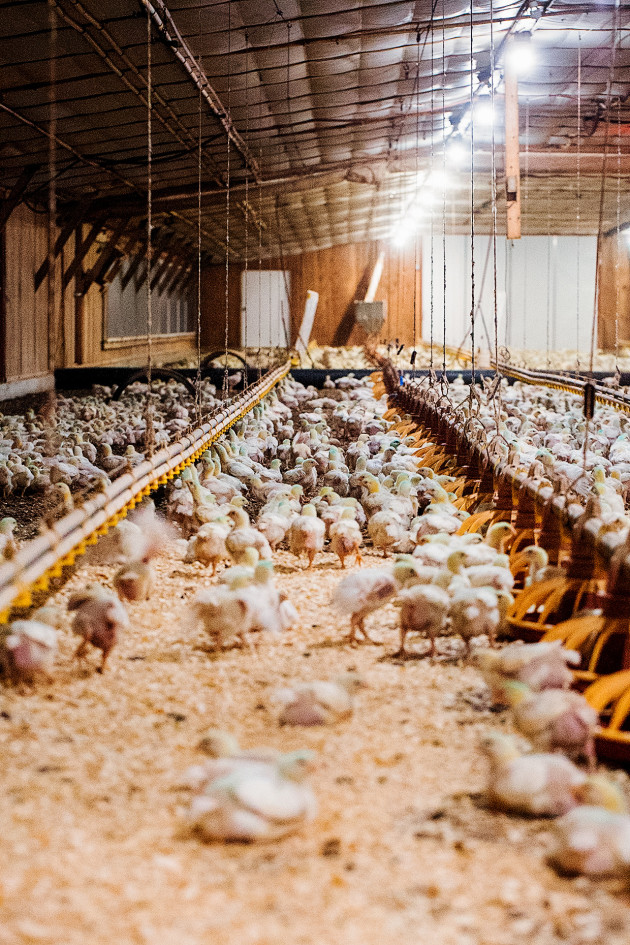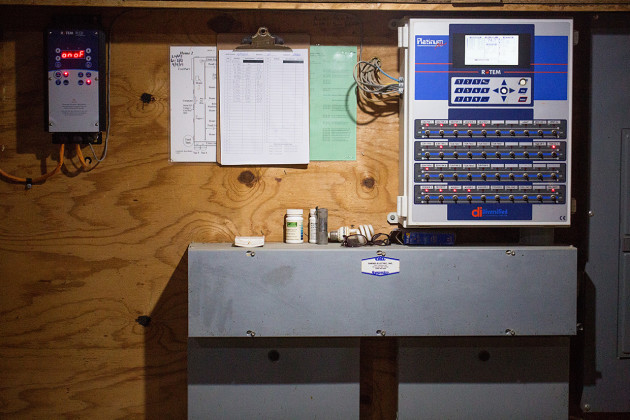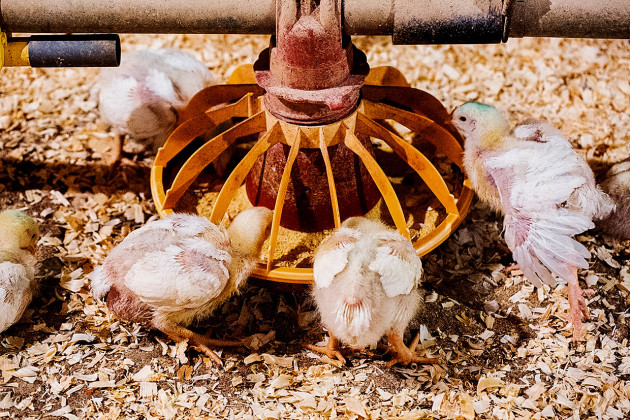Chicken and Apple Kale Salad + Getting to Your Chicken

This blog post was originally drafted and posted by Naomi Robinson of Bakers Royale. Check out the original blog post, and Naomi’s Twitter and Instagram pages.
This is a sponsored post in collaboration with the National Chicken Council.
It’s January so I figured we should throw a salad in here because what kind of blogger or person would I be if I didn’t try to help out my fellow eater with something to balance out all the holiday eating festivities?
I could certainly market this as a detox or a skinny something or another salad, but I don’t do fads or diets. Let’s just agree it’s a salad that flexes any which way your crisper goes, as in throw in whatever you have in the bin. In my case, it’s kale, shredded apples, pomegranate arils, red quinoa, a few butternut squash scraps and and shredded rotisserie chicken for a protein. For the dressing stick with something simple like champagne vinaigrette.You want all the flavors and textures to shine through.
Now that we have the food on the table, let’s get to the meat of this post. By meat, I mean the chicken. I’m excited and pumped to share a few things I learned about broiler chickens (chickens raised for meat) with my recent trip to Maryland for the National Chicken Council. Jenny Rhodes, the owner of Deerfielde Farm, hosted me along with a few other bloggers.
As a blogger I have a lot of partnerships, I love them all or else I wouldn’t be sharing them, but none of them has been as eye-opening as this one.
For years I’ve been led by savvy marketing into thinking that some chickens were pumped with steroids and hormones, while others weren’t because why else would some of them have that tattooed on their packaging while others went unmarked? This idea stuck in my head so much that I avoided any rotisserie chicken that teetered beyond the 2lb norm. I mean, how else could a chicken achieve such a hefty 5 lbs. status without some sort of enhancement? Same reasoning followed when I would skip over the Styrofoam tray of unmarked plump breasts, legs and thighs and reach for the boldly labeled “No Hormones or Steroids Added” chicken package.
And I paid a premium for it. I take some comfort in knowing I’m not alone in that. If you follow me on Instagram than you might have seen (or even participated in) the poll in which 87% of my followers said they would pay more for a hormone free and steroid free chicken.
News flash—FACT: It is against the law to inject or feed chicken with steroids or hormones. In fact, this law dates back to the 1950’s. Who knew because who takes the time to read those little asterisk marks—apparently not a lot of us. If we had, our wallets would be a little heavier.
That said, here are a few other myths and mistakes that were equally as eye-opening when it came to what I didn’t know about chickens raised for meat (commonly known as “broiler” chickens).
Living conditions: Don’t pay more for cage-free chickens—all broiler chickens (meat chickens) live cage-free. See the picture below—that’s how they live, in spacious barns that have strictly controlled temperature, humidity and ventilation systems inside to protect them from outdoor elements, disease and predators. Some farmers, like Jenny, also have a sophisticated computer system that automates things like temperature and water lines to further safeguard the best living environment for the chickens. If the temperature moves even one degree, or the feed is low, Jenny gets an alert sent right to her phone.
Feed: These chickens are fed a wholesome diet consisting of grains like corn and soybeans. There are never any growth-enhancing additives like hormones or steroids added to their feed.
Now that you know a little more about the chicken you consume, I encourage you to visit the National Chicken Council link here to further educate yourself about how your chicken actually makes it from farm to table.
CHICKEN AND APPLE KALE SALAD
YIELD: Serves 4
Ingredients:
Dressing
- juice of one lemon
- juice of one orange
- 1/4 cup champagne vinaigrette
- 1/2 cup olive oil
- 1 garlic clove
- 1/4 cup fresh parsley
- 1-2 teaspoons honey
Salad
- 1 1/2 cup shredded rotisserie chicken
- 1 bunch kale (chopped, without stems, to yield about 4 cups)
- 2 large honey crisp apples, julienned
- 1 cup cubed butternut squash
- 1 cup cooked red quinoa
- 1/2 cup roasted pumpkin seeds
- 1/2 cup dried cranberries
- pomegranate arils for topping
Directions:
Vigorously whisk all ingredients until well blended, or alternately, place all ingredients in a blender and pulse until well blended.
In a large bowl add all ingredients except toppings and toss to coat. Sprinkle on toppings on and serve immediately.
